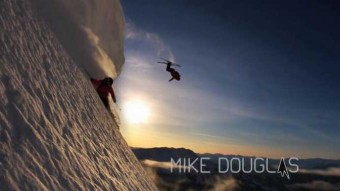What is Fair Use in a Documentary Film?
| Category | Filmmaking |
| Written by | Documentary.net staff |
| Published on | December 5, 2013 |
Summary:
Documentary advocate and entertainment lawyer Michael C. Donaldson clarifies some of the key points surrounding Fair Use.
With a maze of copyright laws to navigate, filmmakers need a hand in editing their movies to get them legally up to snuff. For this reason, Ondi and Vlad from BYOD brought doc advocate and entertainment lawyer Michael C. Donaldson to clarify some of the key points surrounding Fair Use.
They discuss satire, using clips, and how filmmakers can secure the same rights of confidentiality as journalists.
So what is allowed? What’s not? You can jump right to the topic you are most interested in (see below) or just watch the whole video, highly recommended for any documentary filmmaker.
GUEST BIO:
Michael C. Donaldson is an American entertainment attorney, independent film advocate and a recipient of the International Documentary Association’s Amicus Award, an honor bestowed upon only two others, Steven Spielberg and John Hendricks, in the 25-year history of the awards. He is a proponent of the 165-year-old fair-use doctrine and, through its use, is known for saving documentarians hundreds of thousands of dollars while preserving their First Amendment rights.
In addition to serving as General Counsel to Film Independent (home of the Independent Spirit Awards and the Los Angeles Film Festival) and the Writers Guild of America/West Foundation, Donaldson practices at his Beverly Hills law firm, Donaldson & Callif, where, in 2008, entertainment attorney Lisa Callif became a named partner.
Time Topic
00:49 Welcoming Michael Donaldson.
02:33 Michael’s path to entertainment law.
05:14 The wrong reason to write a script.
06:26 Writing “Clearance and Copyright.”
09:04 The explosion of fair use revenue.
12:43 Fair use as a offense, a defense and right.
14:23 The three criteria for fair use.
17:40 A clip for “This Film is Not Yet Rated.” Back and forth with the director over orgasm length.
23:05 Showing fair use of a song, ‘Expelled,” and “Imagine.”
24:40 Proving that outside music is “essential” to the work.
27:02 The cinematic language of words and images.
28:32 The protection afforded to filmmakers who act like journalists–dealing with Chevron.
35:56 The same set of laws for non-fiction print and documentary.
39:05 “White Trash,” clip featuring “Castaway.”
40:58 Errors and Omissions Insurance.
46:02 The power to talk down claims.
47:52 Keeping up with Michael.
49:13 The Daily Dig Down.












Comments